Building a Round House
Part 6 - "Utilities"
Summer - Fall 2006
Providing the nitty-gritty infrastructure of country living!
Well | Rainwater | Septic | Electricity | Solar | Propane
Well

Drilling the well.

Well-head during testing. We got off easy with good water and flow rate
at only slightly more than 300 feet.

Pressure bladder in basement. All set to go.
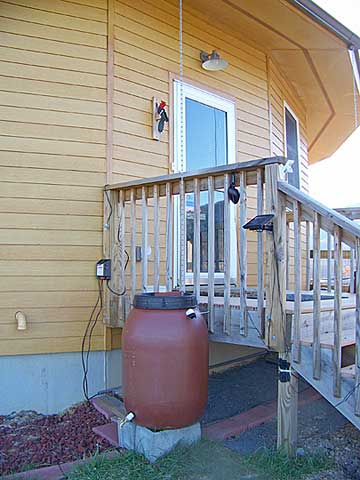

May 2009 The iron in the water (getting worse with each month,
it seems) has made laundry problematical. So we now collect (or "harvest")
rainwater and pump it into the washer for laundry.
In a few years, we'll probably install a complete rainwater system to
use for everything. In the meantime, we've added a larger tank to the
shed to handle all our laundry needs.
Rainwater System
March - April 2012
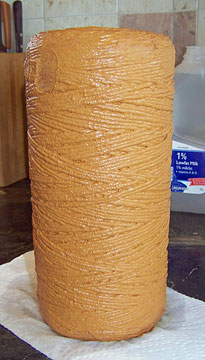 Why do we need
a rainwater system? This is our sediment filter after less than a month's
water use.
Why do we need
a rainwater system? This is our sediment filter after less than a month's
water use.
We contacted Rainwater Management Solutions (Salem, Virginia) to engineer and install a rainwater collection and potable water system.

Two of the three tanks that will hold 4500 gallons of rainwater. That
will take about 4 inches of rain on our 2000 sq ft roof. For scale, that's
a 500-gal propane tank in the background, and Dakota is about 2 ft high
at the shoulder.
 Digging the hole
for the tanks
Digging the hole
for the tanks
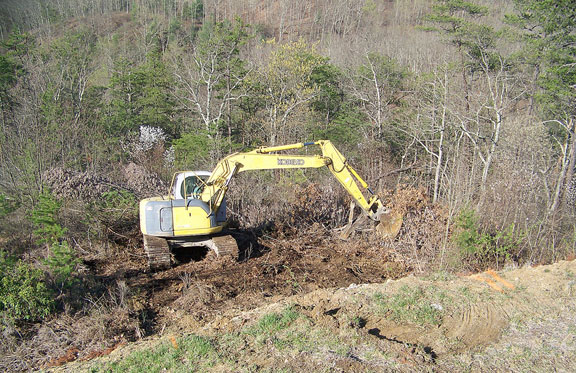
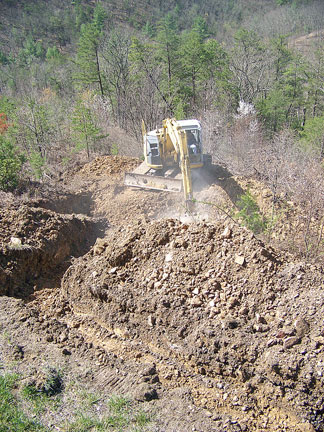
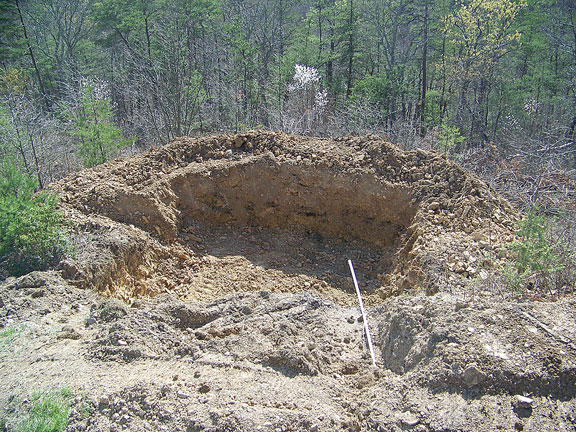
Ready for placing the tanks.

Placing the tanks in the hole.



Meanwhile, the downspouts are being connected to a drain system:


This filter keeps debris out of the tanks.
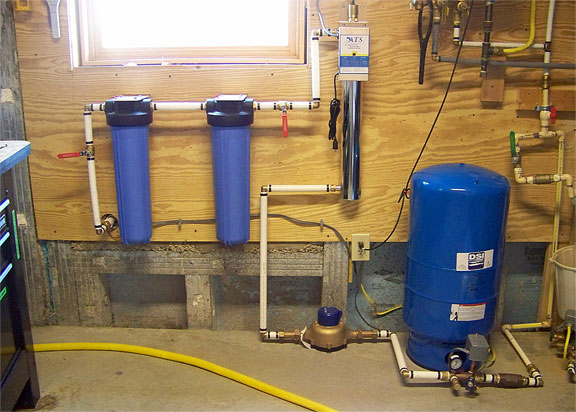
The filtration system (sediment - charcoal - uv light) that will provide
us with potable water.
Now we just have to wait for the rain!
Once up and running, the water quality is excellent -- no musty tastes or smells, just good clean water.
May 2013
Unfortunately, the backfill on the slope above the tanks was not done properly. It slumped and destroyed all the piping into and out of the tanks. We had to dig and replace.

Replacing damaged pipe.

New pipes in place.

This time the backfill was done properly and hill was stabilized with rock.

Looking down from our deck onto the finished project.

It's important for us to know how much water we have in the tank!
We gave up on having a remote-sensor tank level meter.
Now we use a marked stick to directly measure the level.
Septic

Cleared septic field. Tanks will go in foreground; drainfield in the back.

Back-filling around the three tanks. From left to right: distribution
tank, aeration tank, settling tank.

Above: System and drainfield complete and seeded. Below: Controls
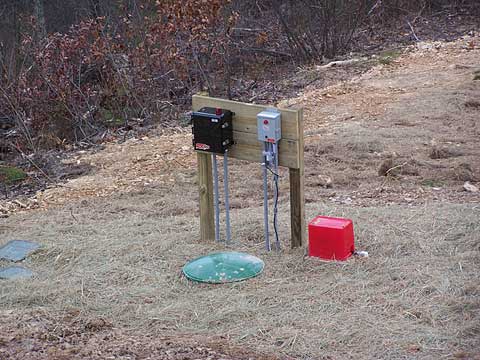
Electricity

The power line will also carry the phone line. Yellow arrows point to
power poles being installed. Utilities will be underground for the last
1000 feet.

Preparing to lay the power line next to the road.
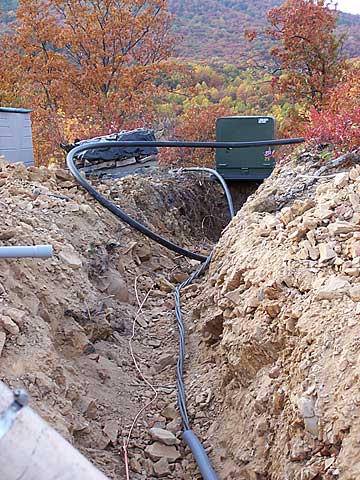

The transformer is next to the old deck. Power and phone cables in trench
at side of road.

The backup generator runs on propane.
Photovoltaic Net-Metering
March 2009
It's difficult to justify on economics alone, but the "Bailout Bill" improved the federal subsidy for "alternative fuels", so we plunged ahead with a net-metering project.
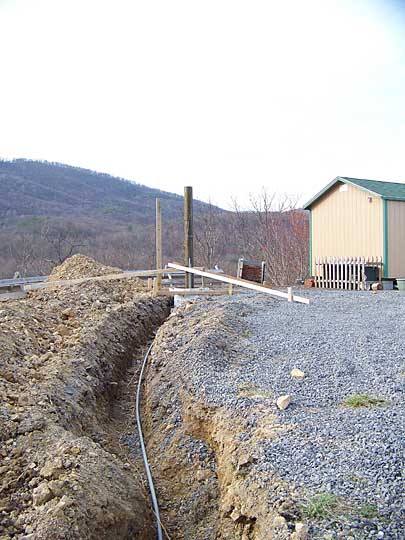
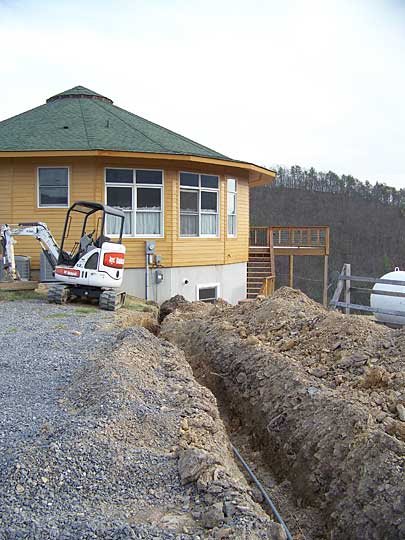
First there had to be a trench between the solar array site and the house.
What a mess!

The pole for the solar array is embedded in 7 feet of concrete.

The array is complete. It now needs some landscaping! Max output is a
bit over 3 KW.

The angle of the array can be adjusted for the season.

An inverter matches the solar output to the electrical grid.
May 22, 2009: Watch the meter run backwards!
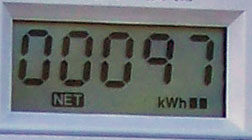 8:30 AM. Just
beginning to make solar power for the day.
8:30 AM. Just
beginning to make solar power for the day.
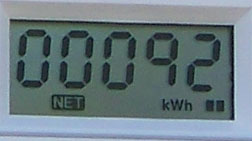 Noon. Making
about 2.5 kW
Noon. Making
about 2.5 kW
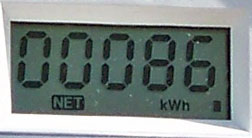 4:00 PM. Beginning
to taper off--producing about 1.9 kW.
4:00 PM. Beginning
to taper off--producing about 1.9 kW.
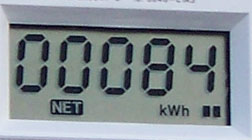 8:00 PM. Sun
is behind mountain. No longer producing power.
8:00 PM. Sun
is behind mountain. No longer producing power.
Today we added 13 kWh to the grid, while producing 20 kWh, then using
an additional 6 kwH overnight. (Must be the continuously-running septic
system pumps that makes that number so high.)
Propane

Propane finally arrives with the first snow flurries of the season.

The "tankless" hot water system--hot water only when needed.
Continue to Part 7 | Return to Index Page
Susan Wells Rollinson
Remodeled October 2019. Updated 1/31/14.